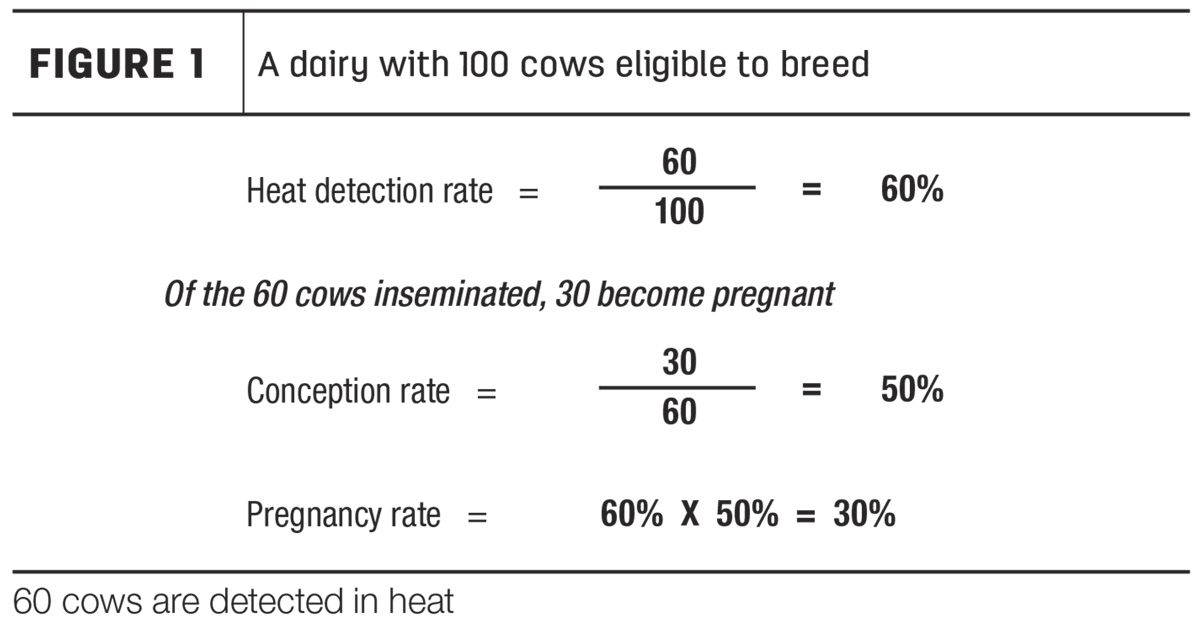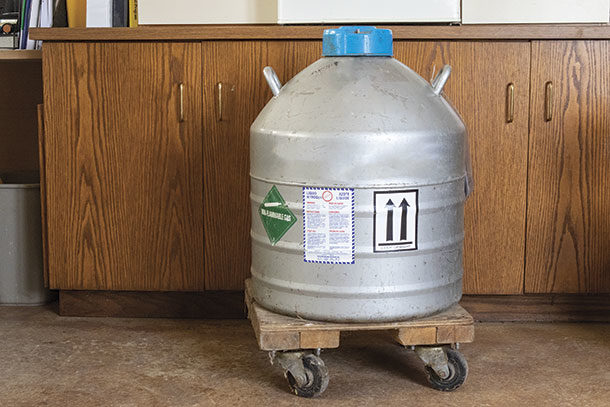To ready this article in French, click here.
The genetic impact of trait selection has changed the dairy cow over the years. In the 1990s, the common selection strategy was centered around selecting for total milkfat and protein production. While we succeeded in creating very productive cows, dairy cow fertility inadvertently decreased, as there is a negative genetic correlation between production and fertility. The resulting fertility challenge led to significant innovation in the industry.
In 2003, the trait known as Daughter Pregnancy Rate (DPR) was introduced as a female fertility trait predicting the percentage of non-pregnant cows that become pregnant during each 21-day period compared to breed base average. This trait measured pregnancy rate, so you can consider DPR your "preg-rate" indicator. DPR is a successfully used trait around the world, but it is key to bear in mind that your preg rate has external factors beyond genetic selection that impact its potential.
Today, DPR is not the only resource to gauge reproductive success of efficiency in a herd. Cow Conception Rate (CCR) was introduced in 2010 as a tool to analyze fertility. It is important to remember that DPR and CCR are not one and the same in terms of the values they express.
Analyze fertility goals
Dairy producers know fertility is key to dairy profitability. Understanding the difference between pregnancy and conception rates is important for genetic selection and evaluation. The difference between pregnancy and conception rates starts with how you as a producer view fertility.
Do you desire fewer days open? Do you want to make sure your cows become pregnant when bred? Answering these questions designates how you view fertility, determines which traits you should select for and selects what you need to do to improve fertility on your dairy.
Days open represents the days between when a cow calves and conception. If you need to decrease the number of days open, you will want to focus on your pregnancy rate. For genetic selection, your focus should be on DPR. Conception rate illustrates the cow’s ability to conceive. To make sure your cows are fertile when you decide to breed them, you will want to make selection decisions based on cow conception rate.
We know heat detection, conception and pregnancy rates are all related. Let’s look at how we calculate them to better understand their relationship (Figure 1).
- Heat detection rate: percentage of cows inseminated over a 21-day period divided by the number of cows
- Conception rate: percentage of cows pregnant divided by the number of cows inseminated during a 21-day period
- Pregnancy rate: calculated by multiplying heat detection rate and conception rate

Pregnancy rate (PR) has been the common measurement of fertility. But today, conception rate (CR) has given us the ability to look at fertility in a more strategic way. There are two types of conception rate: heifer conception rate (HCR) and cow conception rate (CCR). In today’s industry, producers generally place more emphasis on cow conception rate than heifer conception rate, as a cow spends most of her reproductive life lactating.
What is the main difference between PR and CR?
The difference between pregnancy and conception rates are related to how much non-genetic influences are incorporated into the calculations. You can see in the calculation descriptions above that pregnancy rate is influenced by heat detection. Heat detection is a byproduct of management. Your management decisions and synchronization programs have the potential to positively or negatively impact your pregnancy rate.
On the other hand, conception rate is a clean-cut measurement of fertility. Not to say management and the environment do not play a factor, but they are not considered directly in the calculation of CCR.
When should you use PR or CR?
Using pregnancy rate or conception rate is not an either-or situation. If we think back to how this discussion started, the tool to use is determined by your fertility view and where you want to improve. Consider these questions:
- Do you need less days open?
- Do you want to ensure cows become pregnant when inseminated?
Pregnancy and conception rates are highly correlated. Remember, conception rate is a piece of pregnancy rate, so the relationship is strong. Cow conception rate provides an opportunity to be more focused on pregnancy conception rather than days open. Cows with better conception rates give producers confidence that when they decide to breed those females, they will become pregnant.
With the increase in pregnancy rates over the last 15 years due to heat detection technology and timed A.I., producers have become more confident in reproductive efficiency.
One point of DPR on a proof means four days open on a cow’s lactation. For producers willing to trade a few days open for increased production, cow conception rate is quickly becoming a better trait to select for. Today’s dairies need to maximize production while maintaining fertility. Cow conception rate is a tool that producers can utilize in the balancing act.
For example, a producer who desires highly productive cows and accepts the additional days open can select highly productive genetics with a positive CCR. Thus, the producer gets the desired productivity without risking fertility.
Ignoring pregnancy or conception rates forces producers to rely on the current herd’s fertility. It is key to note that genetics will always impact fertility. If you completely ignore fertility measurements, you risk incorporating poor fertility genetics into your herd that will have negative short- and long-term impacts. Genetic progress is the consequence of what you chose to put in your herd, whether you focus on it or not.
How can you maintain or improve fertility?
- Select the right genetics for fertility and your environment and management system.
- Review best practices for A.I. with your teams, including semen handling, thermometer calibration and semen deposit location.
- Promote attention to detail in synchronization programs with internal and external teams.
- Focus on heat detection training if breeding is done by farm staff; otherwise, consider a professional technician service.
- Utilize a custom index to weight and choose the appropriate traits that will help you reach your goals.
Consider these points and work with a local genetic adviser to find the right economical balance of production and fertility.









